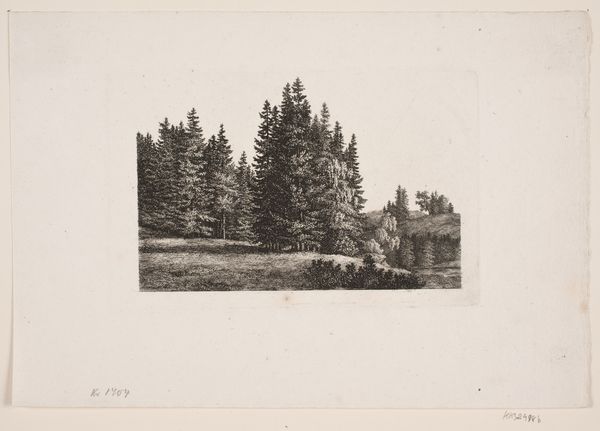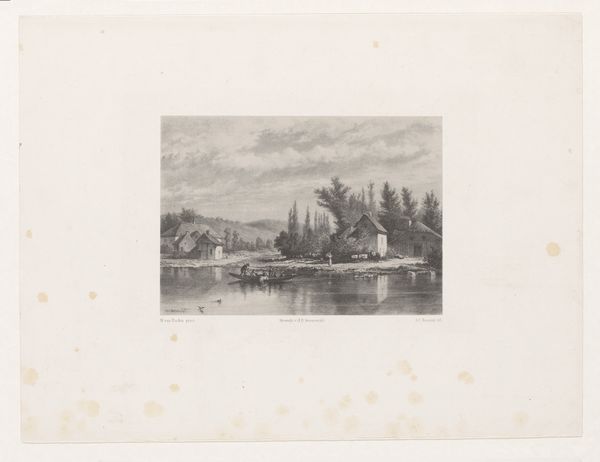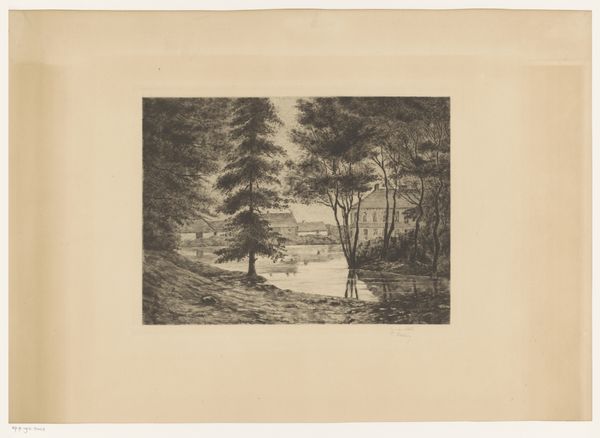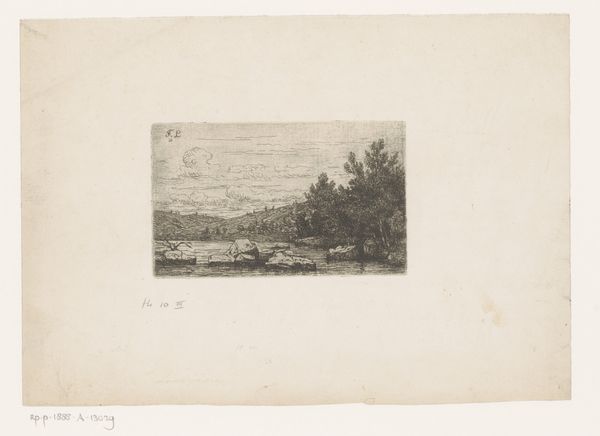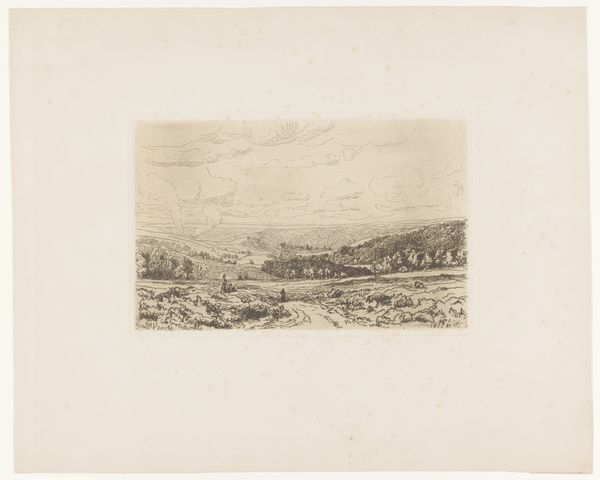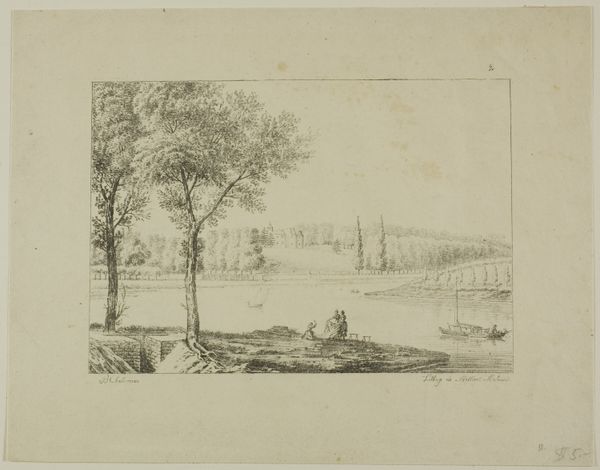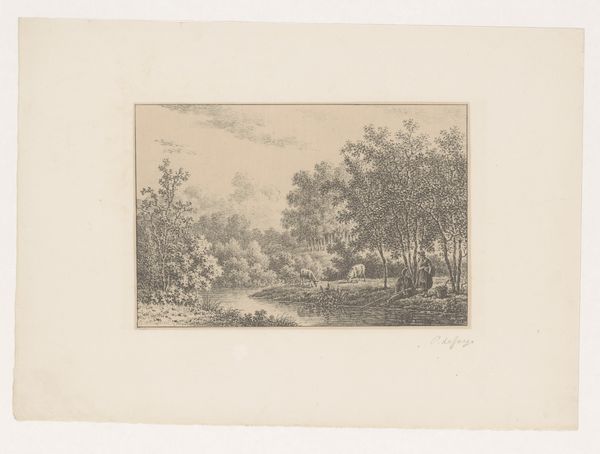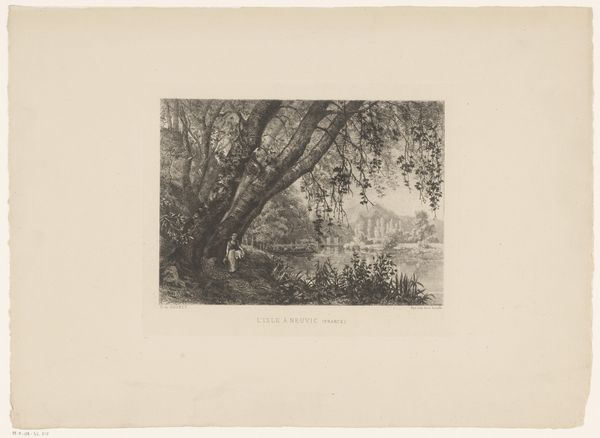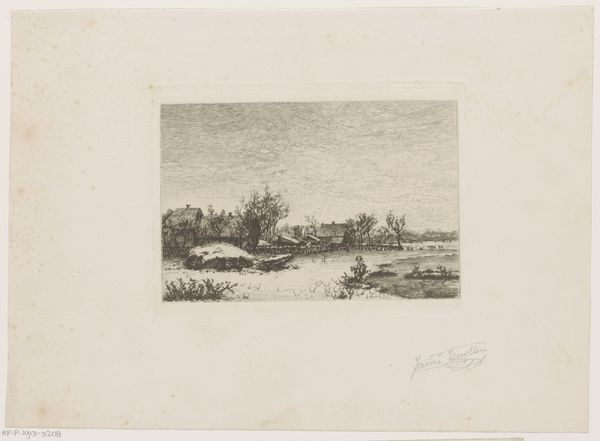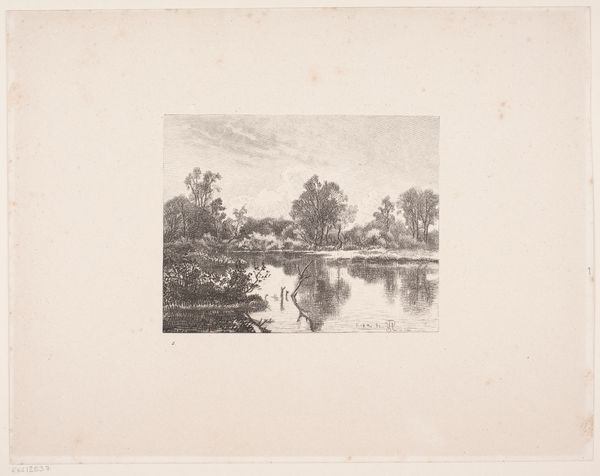
print, etching
# print
#
etching
#
landscape
#
realism
Dimensions: height 237 mm, width 287 mm
Copyright: Rijks Museum: Open Domain
Curator: This is “Vijver van Boitsfort,” a 19th-century etching by Hyacinthe Chameron. It exemplifies the Realist landscape tradition, wouldn’t you agree? Editor: Yes, definitively realist! Though I must say, it evokes a melancholic quietude more than straightforward representation. The palette is restricted and monochromatic, a world away from, say, Millet’s sun-drenched fields. It suggests a profound silence. Curator: The Realist movement itself was, in many ways, a response to the Industrial Revolution and the rise of urbanism. Artists sought to capture the ordinary lives of working people and the beauty of the natural world, perhaps in part as resistance or antidote to it all. The accessibility of printmaking further democratized this movement, bringing scenes like this Boitsfort pond to a wider audience. Editor: And whose realities were actually seen? Realism, like any representational form, is a selective framing. Note, for instance, the erasure of labour, the near-absence of human activity around the pond – is it a romanticization? This quiet, removed reflection arguably benefits a certain segment of society who has the leisure time to enjoy it. How is this work participating in power? Curator: That's a powerful point. What I see here are the burgeoning developments in art production and their impact on artistic circles in Paris and beyond. There was intense debate about what was truly "real", and that extended into a deep reconsideration of who art was for. What role could it have in this swiftly changing world? Editor: The pond itself almost feels like a mirror reflecting the viewer's own isolation back at them, regardless of where they are situated in that hierarchy of power. What I love is the subtle suggestion of resistance just beneath the calm surface. Perhaps what seems placid is actually an act of defiance against the forces seeking to reshape the landscape and society itself. It feels like it's reminding you to pause. Curator: It’s been enlightening to discuss this seemingly quiet piece in such a vital and complex way! I am struck, once more, by how Hyacinthe Chameron uses etching to connect with its immediate context. Editor: I think it is that connection to our past that is ever important. These dialogues and encounters continue long past when the artist or the audience have disappeared. Thank you.
Comments
No comments
Be the first to comment and join the conversation on the ultimate creative platform.
